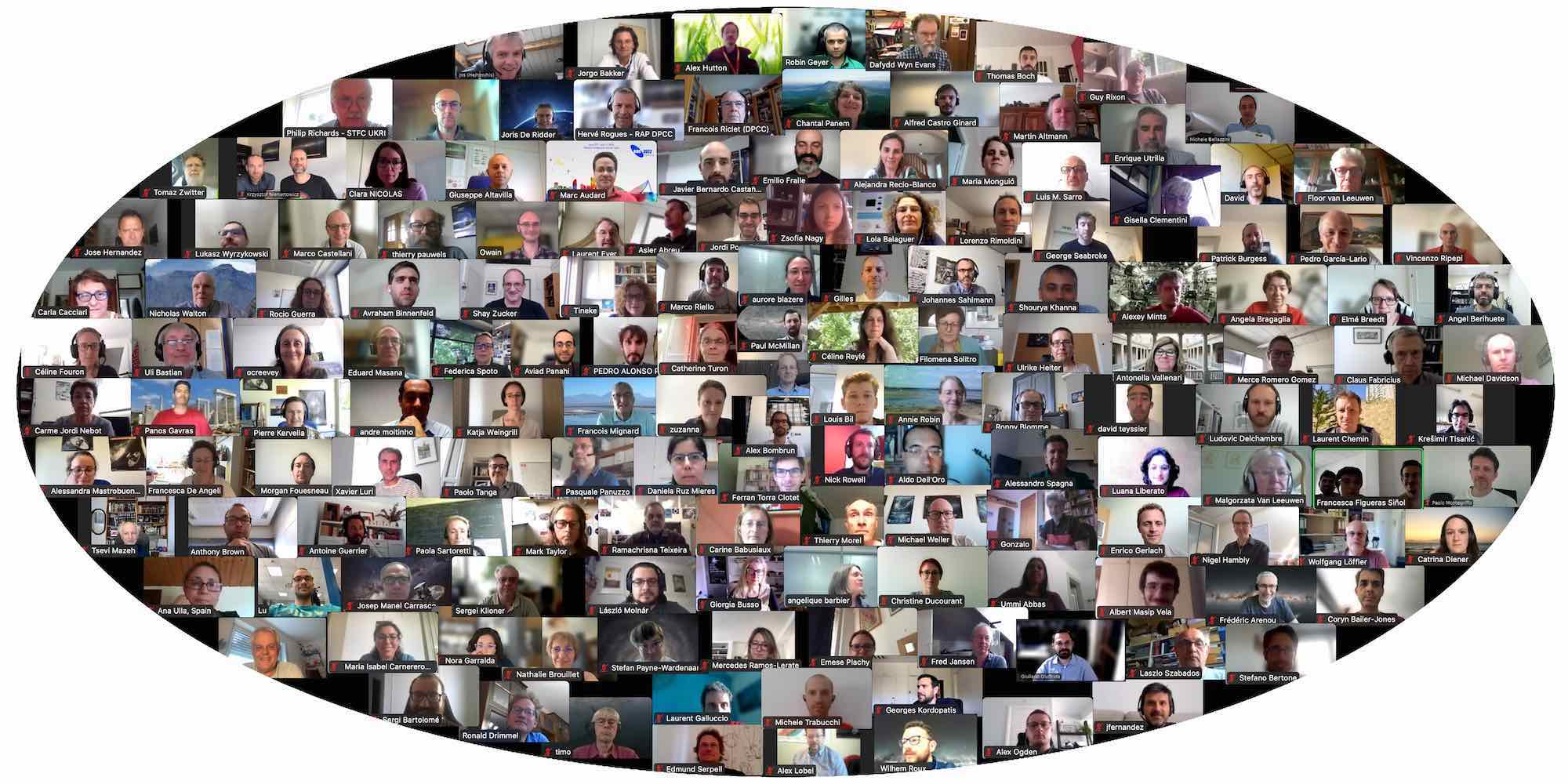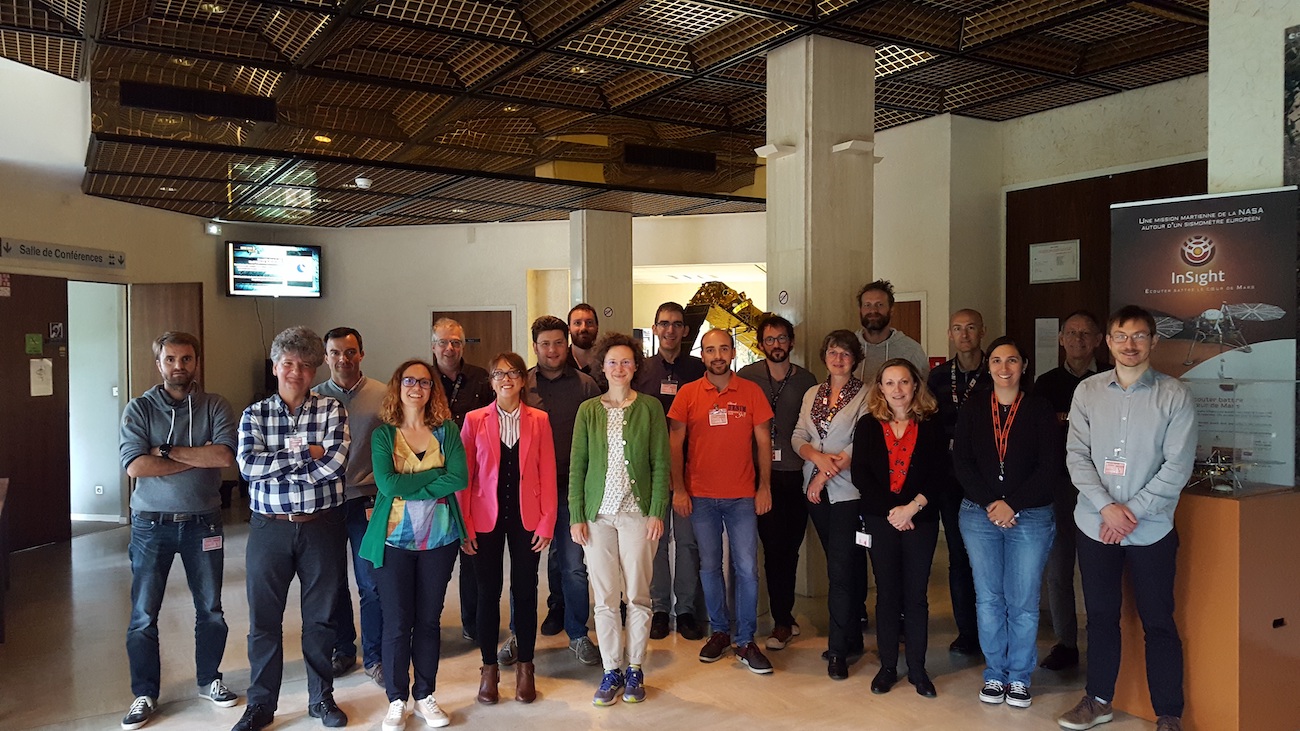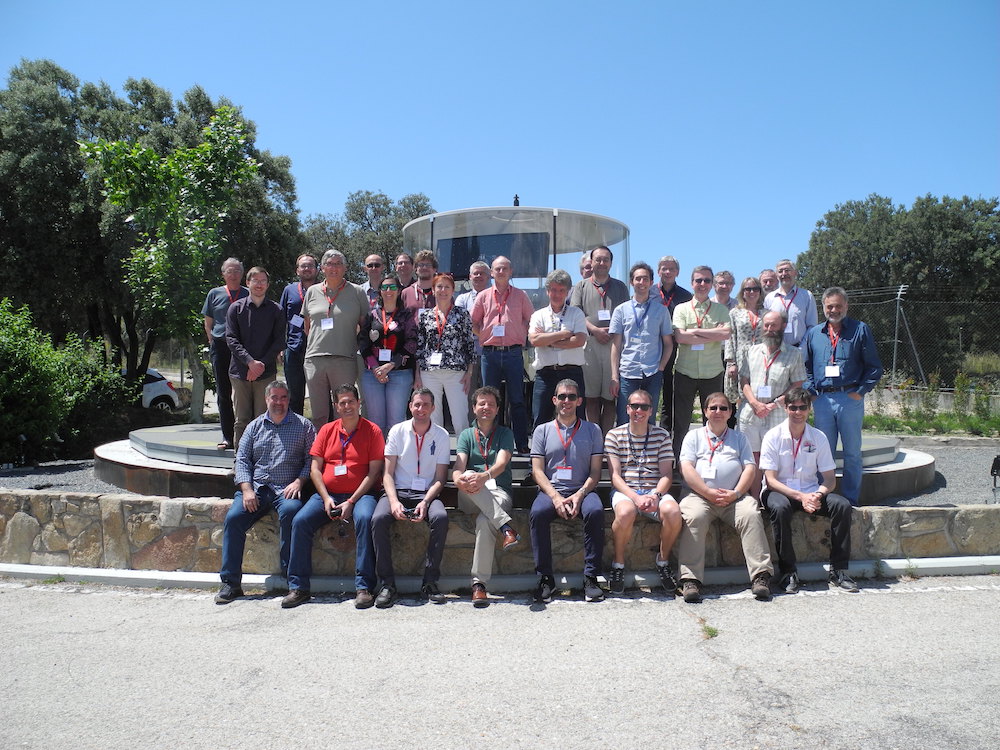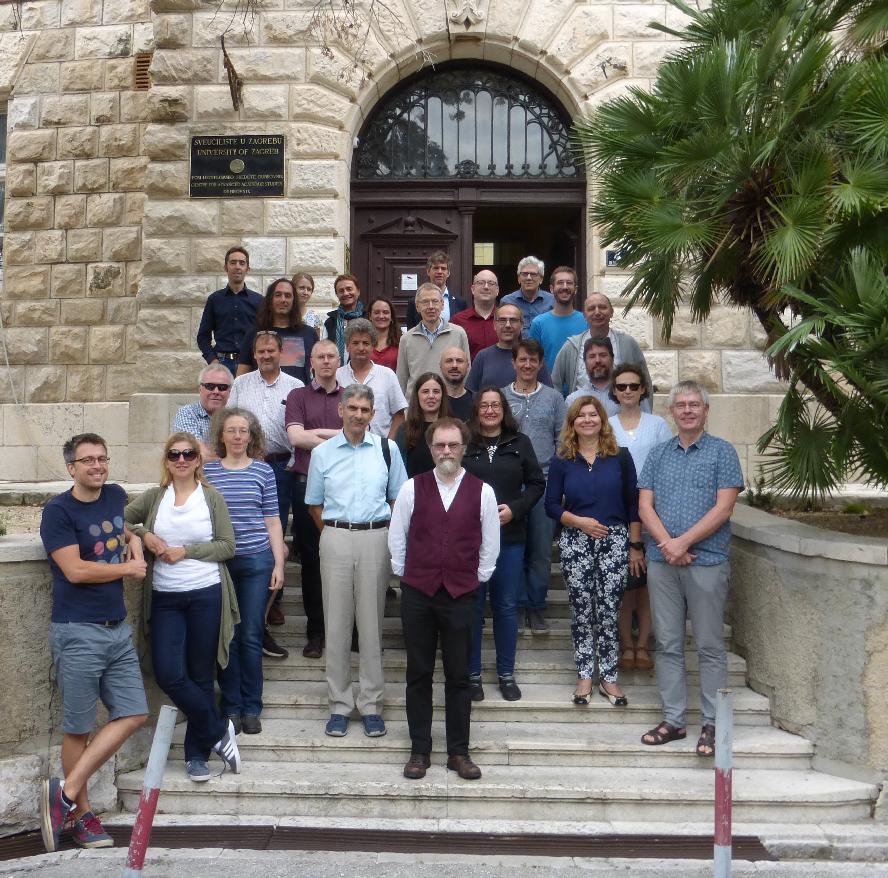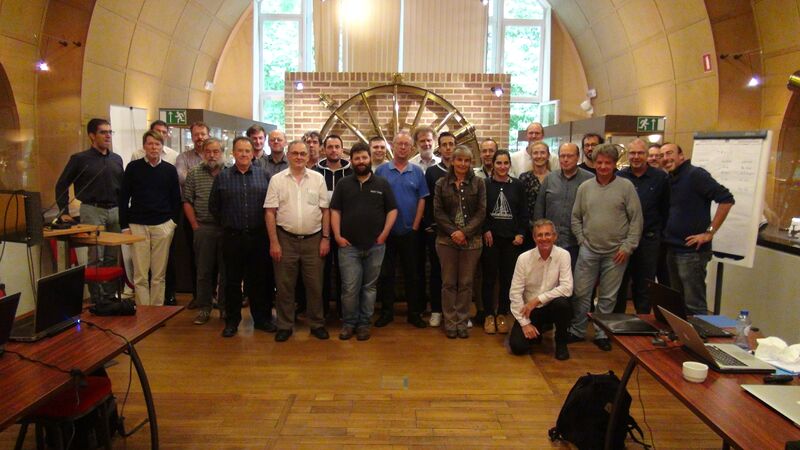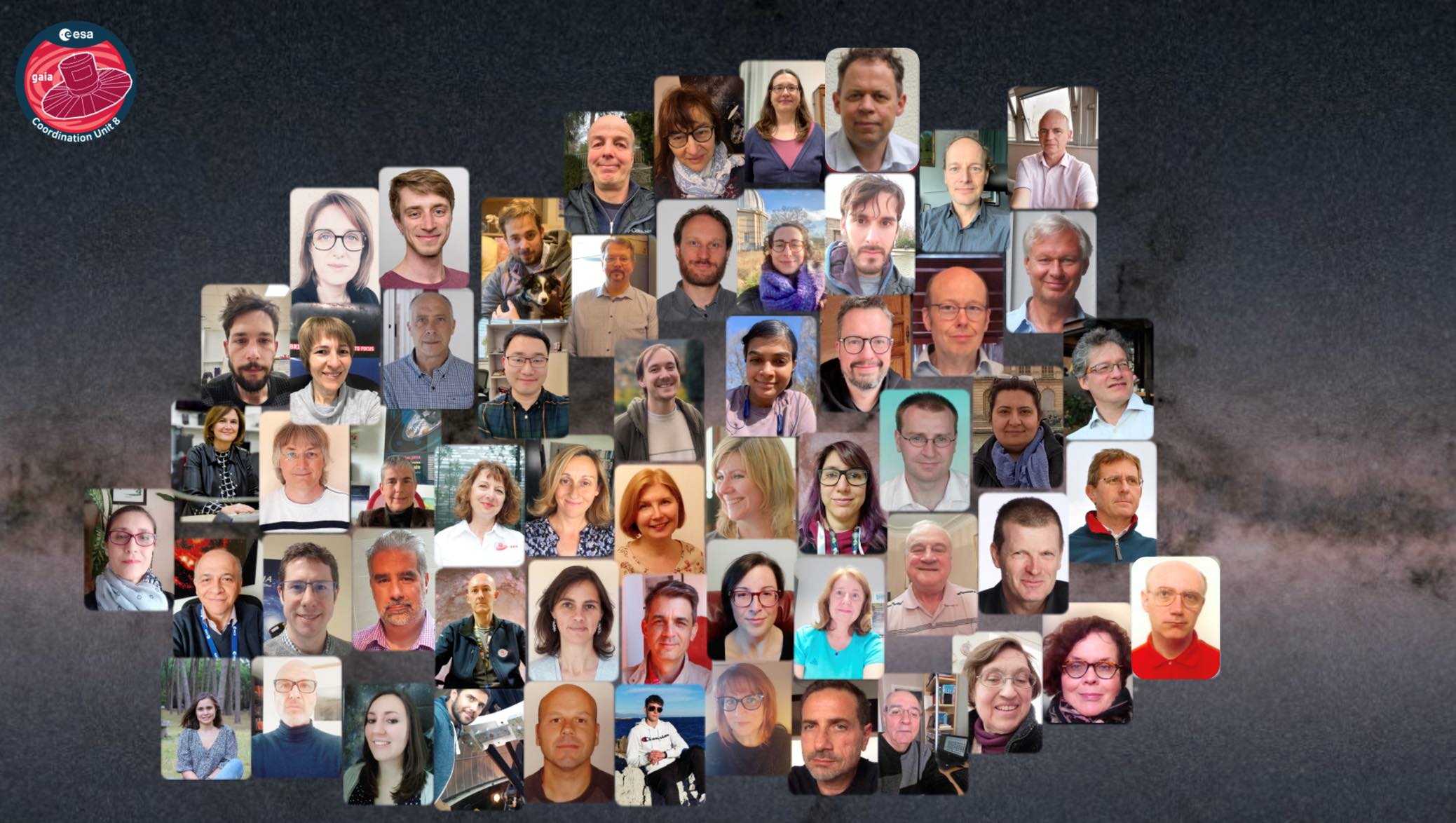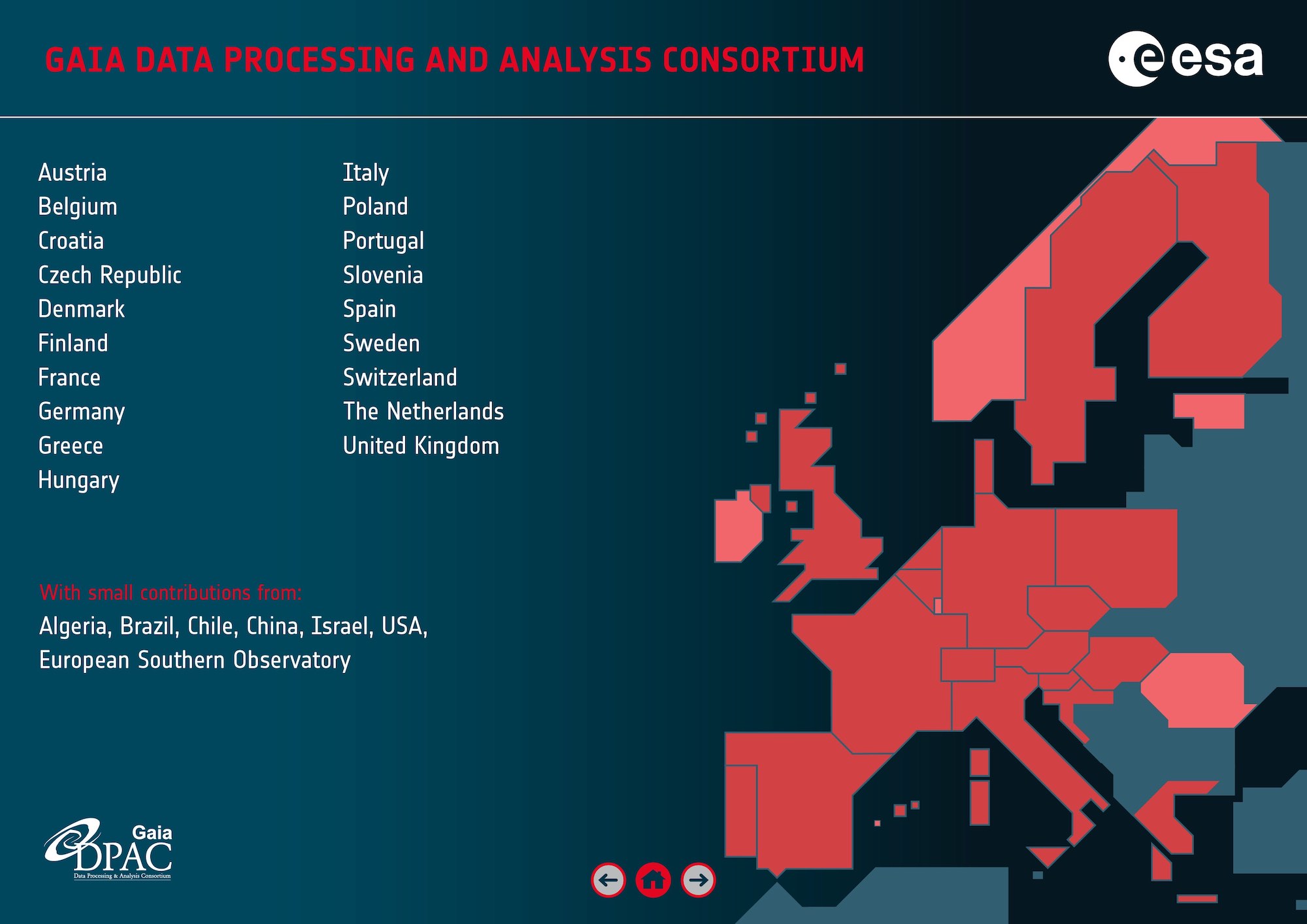Who produced the data? - Gaia
who produced the Gaia data?
The people behind the scenes
Virtual group picture of the Gaia Data Processing and Analysis Consortium as taken right before the Gaia Data Release 3 in May 2022 during one of the Gaia DPAC seminars. Credits: ESA/Gaia/DPAC. Acknowledgements: created by T. Roegiers, A. Brown, M. Fouesneau, F. Jansen, D. Evans, F. De Angeli, M. Audard.
The Gaia Data Processing and Analysis Consortium
Expert scientists and software developers from across Europe and beyond are teamed up in the Data Processing and Analysis Consortium (DPAC). Gaia DPAC, in collaboration with ESA, is responsible for processing and analysing Gaia's data and for producing the Gaia Catalogues. With members from more than 20 countries, the consortium brings together skills and expertise from across the continent, reflecting the international nature and cooperative spirit of ESA itself.
DPAC data processing centres are located in five European countries. DPAC has been in place since 2006 developing the data processing algorithms, the corresponding software, and the IT infrastructure for Gaia. It also executes the algorithms that turn Gaia's raw telemetry into the final scientific data products that are released for usage by the wider scientific community.
The above group picture was created in May 2022 at a Gaia DPAC seminar which was held virtually.
The Gaia Flight Control Team
The Gaia flight control team work at ESA's ESOC mission control centre, in Darmstadt, Germany. This includes planning all flight activities, monitoring the health and status of the spacecraft, coordinating with the science operations centre at ESA's ESAC Establishment in Spain, scheduling ground station passes, downloading an immense amount of science data each day and generally making sure the satellite performs as expected. The Gaia spacecraft is unique, with unprecedented dynamic and thermal performance. In ensuring the ambitious goals of this mission are met, the team have dealt with some interesting challenges...not least preparing and assembling this 'Gaia cake' as part of the celebrations for the DR3!
Group picture of the Gaia Flight Control team in 2022. Image credit: Gaia team @ ESOC
The Coordination Units
The 9 coordination units activities are described in short as follows:
Coordination Unit 1
Coordination Unit 1 (CU1) is in charge of the system architecture and supports the other units with a shared software toolbox and data model. They manage the software for the Gaia Main DataBase, receive and unpack the telemetry from the mission operations centre before handing it to Coordination Unit 3 and provide the payload operations system used by the Calibration team at the Data Processing Centre at ESAC. CU1 also maintains the GOST - the Gaia Observation Forecast Tool."
Group picture of Coordination Unit 1 together with the representatives of the Gaia Data Processing Centres in June 2019. Credits: ESA/Gaia/DPAC/CU1
Coordination Unit 2
Coordination Unit 2 provides the data simulations.
Coordination Unit 3
Coordination Unit 3 performes the core processing, which leads to the astrometry (positions, parallaxes and proper motions).
Coordination Unit 4
Coordination Unit 4 processes specific objects and consists of 3 sub-teams: one for the processing of solar system objects, one for the processing of extended objects (like galaxies for example) and one for the processing of non-single stars.
Group picture of Coordination Unit 4. Credits: ESA/Gaia/DPAC/CU4. Image taken by Wouter van Reeven.
They are basically in charge of managing what is not single stars... which still represents a large part of the visible universe! This sunny picture taken at ESAC before the pandemic when the Gaia DR3 preparations had just started shows that specialists of the solar system, binary stars, exoplanets, galaxies and quasars could join, work together and each provide great DR3 results!
Coordination Unit 5
Dafydd Evans, manager of CU5: "CU5 likes to think of itself as the bright people! i.e. we work on the brightnesses of the sources in the catalogue. However, for this data release our main contribution is with the BP/RP spectra where we have calibrated 220 million low-resolution spectra. Not only are these spectra published in Gaia DR3, but they have been passed on to our colleagues in CU3, CU4, CU7 and CU8 to help them in their work. This picture shows us at our last face to face meeting in Dubrovnik in 2019. Hopefully we will get to meet up in person soon."
Group picture of Coordination Unit 5. Credits: ESA/Gaia/DPAC/CU5.
Coordination Unit 6
The CU6 is responsible for transforming the raw spectra obtained with the Radial Velocity Spectrometer into cleaned and calibrated spectra and using them to extract epoch and mean stellar radial velocities, rotational velocities, and brightness.
To achieve these goals, we use the star positions and satellite attitude from the CU3, as well as atmospheric parameters estimated by the CU8 in a previous cycle. Our calibrated spectra are then used by the CU8 to extract chemical abundances and refined atmospheric parameters of the stars, along with information about the interstellar medium. The epoch radial velocities are used by the CU4 to extract valuable information about the orbits of spectroscopic binaries, and by the CU7 to construct radial velocity curves for variable stars. The DPAC is a large collaboration!"
Group picture of Coordination Unit 6. Credits: ESA/Gaia/DPAC/CU6. Source EAS Presentation Paola Sartoretti.
Coordination Unit 7
Variability processing is the task of Coordination Unit 7 bringing classifications for about 24 types of variable stars. Also processing for extrasolar planets for example is performed by this team.
Coordination Unit 8
Coordination Unit 8 derives astrophysical parameters from the mean BP/RP spectra provided by CU5 and the mean RVS spectra provided by CU6, along with astrometry (CU3) and photometry (CU5). The data products comprise stellar, interstellar and extra-galactic astrophysical properties, such as classifications of all sources, qso redshifts, interstellar medium characterisation including 2D total galactic extinction maps, classification of outliers through self-organising maps, and many stellar spectroscopic and evolutionary parameters, such as temperatures, metallicities, radii, masses, activity index, chemical abundances and much more.
The CU8 team responsible for producing astrophysical parameters in DPAC, see the video published here describing how the teams derive the parameters. Credits: ESA/Gaia/DPAC/CU8.
Find here a highlight of Coordination Unit 8
Coordination Unit 9
Coordination Unit 9 looks after the publication of the Gaia tables. This includes the operational aspects, the archive infrastructure, the cross matches to other catalogues, the archive visualization, and the on-line data release documentation. In addition, the validation of the data and the numerous educational and outreach activities.
The CU9 team responsible for catalogue access. Credits: ESA/Gaia/DPAC/CU9.
Contributions to the Gaia Data Processing and Analysis Consortium
The Gaia Data Processing and Analysis Consortium consists of a large pan-European team of scientists and engineers with small contributions from other countries across the world. 9 coordination units and 6 data processing centres are in place to organise the processing and perform the preparations for data releases. Each team is specialized in their own specific field.
A map of the contribution to Gaia DPAC, based on affiliations of all authors of the Gaia Collaboration papers for Gaia Data Release 3. Countries are considered to be contributing if one or more members of the Gaia Data Processing and Analysis Consortium have identified one or more institutes in the country as their affiliation on the Gaia Collaboration papers. These countries are highlighted in dark red when in Europe. A full summary of countries is given on the left in this image, also including the contributions outside Europe to the Gaia data processing. Some ESA member countries are not necessarily involved in Gaia DPAC itself, and hence are highlighted in lighter red.
Further reading?
interviews with Coordination Unit 3 in 2021 (follow the link)
a highlight of the women in Coordination Unit 8 for International Women's Day 2022 (follow the link)
Story written by Tineke Roegiers, Paola Sartoretti, Peter Collins, Frédéric Arenou, Dafydd Evans, Orlagh Creevey, Alexander Hutton, Xavier Luri
Published 13 June 2022
- Removed a total of (31) style text-align:center;
- Removed a total of (10) style text-align:justify;
More Gaia DR3 stories?
Where are the stars? How far away are they? How bright are the stars?
What colour do they have? What are the stars made of?
Where do they go? Where do they come from? Do they approach us? Do they move away?
Did something move in front of the star? What is in between the stars?
How big, warm, old, ... are they? How do they Blink?
Is it a double star? Do they go boom? Is it a galaxy?
Is it a solar system object? Is it a quasar?
Who created the data? Can I Use Gaia data with other observatories?
How did DPAC produce the data for this star? Where is the data?
-
ESA's press release of Gaia Data Release 3
-
Gaia's Early Data Release 3 stories
-
ESA's press release of Gaia Early Data Release 3
- Removed a total of (16) style text-align:center;








































 Sign in
Sign in
 Science & Technology
Science & Technology
